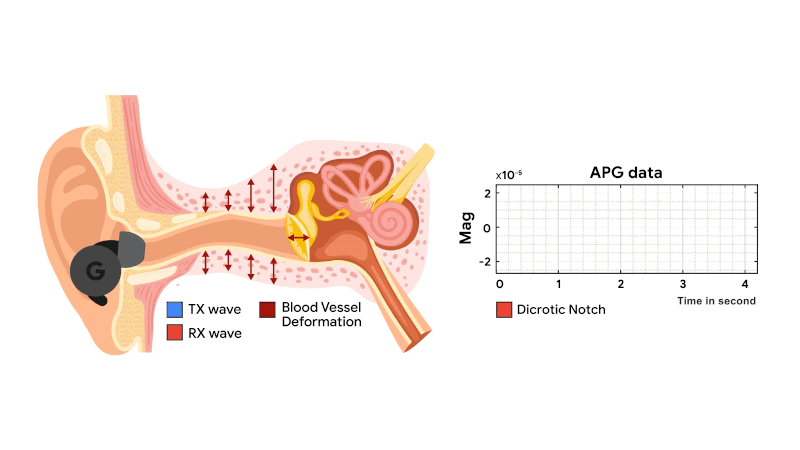
Editor’s Note: This article originally appeared on Tom’s Guide.
In-ear buds that track heart rate aren’t new, but they have their limitations, especially when it comes to fit and the constant contact required for reliable readings. Such devices use photoplethysmography (PPG), like heart-rate sensors on the best smartwatches, where light is refracted through flowing blood.
But Google has found another way to measure heart rate through the ears, and it could theoretically be added to any of the best noise-canceling earbuds via a simple software update.
The news was shared in a post on the Google Research blog and involves a process called audioplethysmography (APG) where ultrasound is used to measure heart rate instead of light. By bouncing low-intensity ultrasound off the inside of the ear canal, researchers used the ANC microphones to detect changes on the skin’s surface as blood flows through it.
“APG transforms any TWS ANC headphones into smart sensing headphones with a simple software upgrade, and works robustly across various user activities,” the blog post concludes. “The sensing carrier signal is completely inaudible and not impacted by music playing.”

The success of this may sound unlikely given this is absolutely not what ANC tech is for and the size of the blood vessels involved, but the results are extremely promising. Across 153 participants, Google reported a median error of just 3.21% across participants for measuring heart rate, and 2.7% for heart-rate variability.
The results were consistently good even with a poor ear seal, varying ear canal sizes and different skin tones. And the last point is particularly important, as light-based sensors have historically been weaker on darker skin (or even if a tattoo is in the way).
The researchers do concede that noisy environments can cause issues and that the APG signal can be “heavily disturbed by body motion,” which doesn’t sound great when runners would probably benefit from the technology the most.
But even on this point, there’s hope as the researchers believe the problem can be lessened with multiple frequencies. “We can use the multi-tone APG as a calibration signal to find the best frequency that measures heart rate, and use only the best frequency to get high-quality pulse waveform,” the blog post explains.
The downside to this kind of heart-rate measurement, of course, is that it’s not 24/7. Even if earphone battery allowed for that, it’s simply not comfortable to keep them in all the time, even before you consider how anti-social it would be. For that reason, wrist-based wearables have a significant advantage when it comes to monitoring health over a 24-hour period, including the sleep stages.
Still, it’s certainly an interesting use of ANC technology and the fact it can be introduced via a software update is very exciting indeed. Here’s hoping that a rollout to Pixel Buds Pro is in Google’s roadmap…
About the Author
Freelance contributor Alan Martin has been writing about tech for over a decade, covering phones, drones and everything in between. Previously Deputy Editor of tech site Alphr, his words are found all over the web and in the occasional magazine too. When not weighing up the pros and cons of the latest smartwatch, you’ll probably find him tackling his ever-growing games backlog. Or, more likely, playing Spelunky for the millionth time.
See also: 1MORE Launch New Penta Driver P50 And S50 Sports Headphone Models












